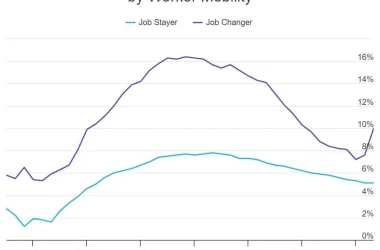MARTINSBURG, W.Va. — Frustration and disappointment were the common reactions by local public schools leaders to Gov. Earl Ray Tomblin’s surprise announcement late Monday afternoon that he is cutting state aid to public schools by 1 percent effective this year.
“We were blindsided – we had no advance notice,” Berkeley County Public Schools Superintendent Manny Arvon said Tuesday in a telephone interview. “That’s $1 million for Berkeley County.”
Because the news “came out of nowhere,” Arvon said the administration is looking for clarification on whether Tomblin has the authority to cut state aid to public schools.
“We have a lot of questions about the ability to cut K-12 funding, because of a clause in state code,” he said. “What’s different about this year? Schools were not available for cuts in past years. Why this year?”
In his announcement, Tomblin said state aid to public schools “had not been subject to budget cuts in recent years, but that they would see a 1 percent reduction” this year.
He also announced an across-the-board 4 percent cut for most state agencies, effective immediately, as well as other cost-saving measures, such as a continued hiring freeze, eliminating nonessential travel and cancelation of annual holiday parties.
Tomblin cited a “dramatic decline” in severance tax revenues from coal and natural gas as the reason for the budget cuts.
Arvon is concerned about the timing of the budget cut, he said.
“This is Oct. 6 and our salaries are set on Oct. 1,” he said. “Eighty-five percent of our budget is personnel-driven. You can’t reduce personnel salaries. We’re getting the budget cuts after the fact.”
Contacted by phone Tuesday, Charles Wilson, president of the Berkeley County Education Association, said he understands Tomblin is under a great deal of pressure to balance the state’s budget.
“But I’m disappointed,” Wilson said. “Cuts to education do not help students, don’t attract new teachers and get teachers to stay, and it doesn’t help the business climate.”
In the long term, he said teachers are working with their legislators to find solutions to the education budget.
“The Legislature and the governor have to fix the state aid formula,” Wilson said. “It does not fit low population counties, it doesn’t fit high-growth counties or counties with excessive growth.”
West Virginia House of Delegates Majority Leader Daryl Cowles, R-Morgan, said Tomblin’s announcement was “more bad news, especially for the Eastern Panhandle. It shows we have to get our economy on track and make the tough decisions.”
Cowles cited a recent state Department of Education audit that showed there is about $90 million that the Department of Education could save and that some public schools were shorted millions of dollars.
The audit he is referring to showed that from 2009 through 2015, Berkeley County should have received in state aid about $2.8 million or $159 per pupil more than it did receive; Jefferson County, about $2.5 million or $288 per pupil; and Morgan County, $695,114 or $264 per pupil.
“There are reforms to the Department of Education that could be made that would save money without cutting county budgets,” he said. “It’s a clear sign we need to use our dollars more effectively and prioritize our spending. Across-the-board cuts are tough. They’re going to hurt. I think there are wiser ways to cut.”
Dave Banks, the superintendent of Morgan County Public Schools, said Tuesday that his district would see a reduction of $136,600.
“That’s a big hit for us,” he said in a telephone interview. “I understand the need to balance the budget, but we need time to prepare for cuts like this. We’ve gone through cuts the last eight years because of declining enrollment. We’re projecting a $700,000 deficit next year.”
Banks plans to hold emergency meetings with the district’s school principals and administrators to work out the details of addressing the funding cut, he said. He hopes to have a plan in place before the end of the week, he said.
“It’s going to be a challenge,” Banks said. “At some point, it directly impacts students. That’s what concerns me.”
Jefferson County Board of Education President Scott Sudduth said Tuesday he thought “it was an April Fools joke, but this is October.”
He estimated the cut to Jefferson County would be about $500,000 on top of funding cuts the school board is anticipating.
“West Virginia is last in teacher salaries and academic performance,” Sudduth said. “These cuts are not the message I think West Virginia should be sending. These are austere times, but it is not the time to cut our investment in education.”
Jefferson County’s board of education also is in the middle of an excess levy renewal campaign, he said.
The levy accounts for 22 percent of the schools’ operating revenue, according to previous reports. The current levy has generated about $20.1 million a year since 2010, of which about $16.2 million goes to salary supplements, stipends and personnel not funded through state aid, according to reports.
“I hope Tomblin’s announcement will reinforce how important the levy is,” Sudduth said.
Dr. Bondy Shay Gibson, Jefferson County superintendent of schools, said she got the notice of the cuts via email Tuesday morning.
“My concern is the context in which the cuts are coming,” she said Tuesday in a telephone interview. “We learned in September that we have to cut about $950,000 from the excess levy. The County Commissioners cut impact fees. We received $2 million from impact fees in 2014. And table games revenue is down. The state aid cut is coming amidst other cuts. It’s very difficult.”
Since the Jefferson County school system is in the process of putting together its budget for next year, Gibson does not foresee any extraordinary activity to address the state aid cut, she said. The administration will address the state aid cut as part of it normal budget process.
“But it’s frustrating, disheartening, painful,” she said.
The county public schools are not the only ones to feel the pinch of Tomblin’s cuts. Blue Ridge Community and Technology College will have to absorb a 4 percent reduction in funding, Pete Checkovich, president of BRCTC, said Tuesday in a telephone interview.
“We might have to cut back services for students, and tuitions and fees might have to go up next year,” he said. “We have a branch in Berkeley Springs. Its fate might be in the balance. You can only cut so much office supplies. We may be faced with staff cuts, but we will try to minimize the impact on people. Although that’s almost impossible to do.”
Checkovich said the cut would amount to about $186,000.
“That might not sound like a lot, but this is the third or fourth year we’ve been cut,” he said. “Blue Ridge is the lowest funded community college in West Virginia. Even if all the cuts were restored, that would make our budget $5.1 million, and that still would be the worst funded community college in West Virginia.”
Of the nine community and technology colleges in West Virginia, Blue Ridge is the fastest growing, recording a 222 percent growth rate over the past 10 years. However, Blue Ridge received $2,348 for each full-time equivalent student in 2014, which is the lowest of the nine CTCs.
Eastern CTC, with 475 FTE students, the smallest of all the CTCs, received $4,090 per FTE student in 2014.
“I understand there has to be a No. 9, but make it respectable,” Checkovich said. “We’re not even close.”
He already has his staff researching where budget cuts might be made. They will be working on a plan to address the cuts this week, he said.
“The cut was not a surprise, although the 4 percent was,” Checkovich said. “We were told in July to expect a 3 percent cut. My fear is this is not the end. We could have more cuts in six months.”
– Staff writer John McVey can be reached at 304-263-3381, ext. 128, or twitter.com/jmcveyJN.



